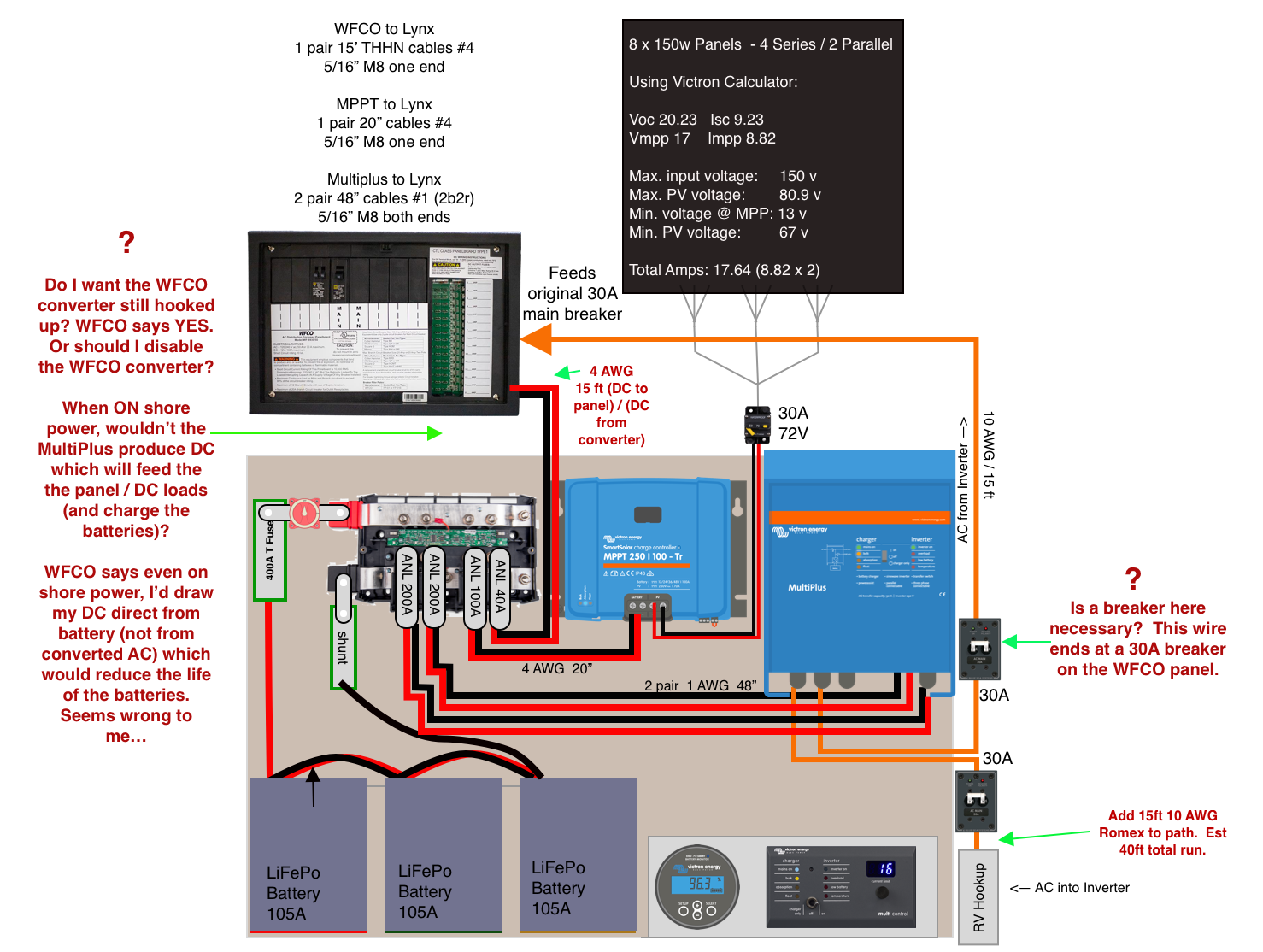I had a confusing call with WFCO about connecting my solar system into their panel. This is in a Keystone 30A trailer.
WFCO tech support says I want to keep the WFCO panel converter connected to my new setup. I assumed I would not. WFCO says if I disconnect their converter then even when connected to shore power the WFCO panel would draw DC power directly from the batteries. I had assumed that when on shore power the MultiPlus would output DC which is what would power the DC at the panel.
Who's right?
Also, WFCO says I do not need a circuit breaker at the AC output of the MultiPlus (see diagram) because he thinks the MultiPlus has it's own circuit breaker that will protect the AC romex feeding the panel. Others have said I do need a separate breaker.
Again, who's right? Thanks for any help / feedback.

